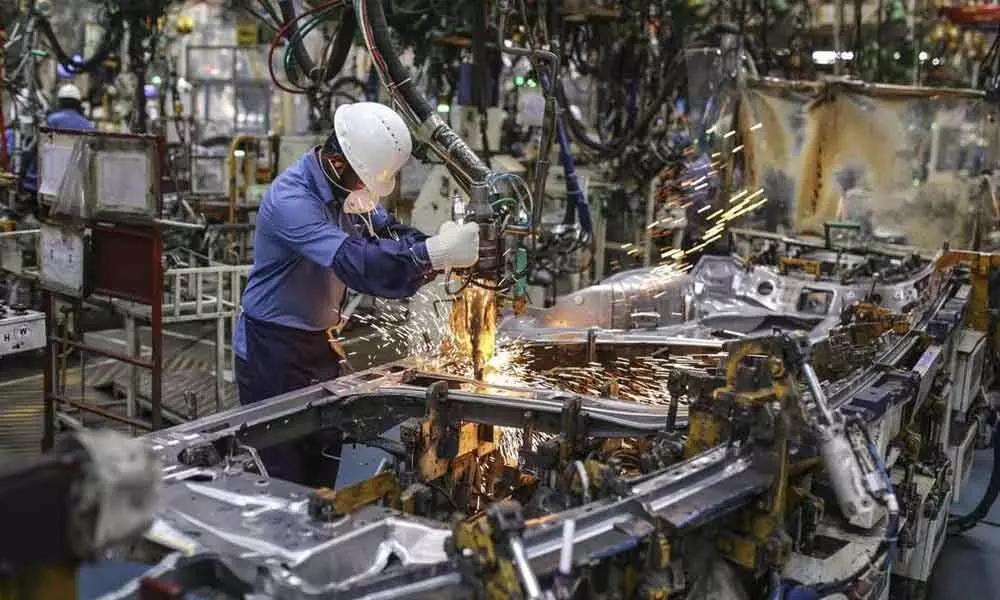Manufacturing loses steam, falls to 3-month low
PMI has fallen from 58.9 in Oct to 56.3 in Nov, says monthly survey
image for illustrative purpose

New Delhi : India's manufacturing sector activity lost momentum and fell to a three-month low in November amid slower increases in factory orders, exports and buying levels, a monthly survey said on Tuesday.
The seasonally adjusted IHS Markit India Manufacturing Purchasing Managers' Index (PMI) fell from 58.9 in October to a three-month low of 56.3 in November, indicating that the manufacturing sector growth remained strong, despite losing traction. In PMI parlance, a print above 50 means expansion, while a score below that denotes contraction.
"The Indian manufacturing sector remained on the right path to recovery, with strong growth of new orders and output sustained during November," Pollyanna De Lima, Economics Associate Director at IHS Markit, said. Lima further noted that "the softening of rates of expansion seen in the latest month does not represent a major setback, since these are down from over decade highs in October, a spike in Covid-19 cases and the possibility of associated restrictions could undermine the recovery".
As per the survey, aggregate new orders rose at the slowest pace in three months. The companies indicated that sales growth was underpinned by resilient demand, though curbed by the Covid-19 pandemic, it added. "Companies noted that the pandemic was the key factor weighing on growth during November, with Covid-related uncertainty also restricting business confidence," Lima said. Business optimism faded slightly in November. "Output growth is still predicted for the year ahead, but concerns about public policies, rupee depreciation and the Covid-19 pandemic dampened overall confidence," according to the survey.
Employment, on the other hand, decreased again as companies observed social distancing guidelines. The rate of job shedding was solid and little-changed from October. "Employment remained in contraction territory, however, with companies reportedly keeping the minimum possible number of workers as per government guidelines," Lima said. On the price front, input costs and output charges rose at accelerated rates that nevertheless remained below their respective long-run averages.
Meanwhile, India's economy recovered faster than expected in the September quarter as a pick-up in manufacturing helped GDP clock a lower contraction of 7.5 per cent. The gross domestic product (GDP) had contracted by a record 23.9 per cent in the first quarter of 2020-21 fiscal (April 2020 to March 2021) as the coronavirus lockdown pummelled economic activity. The second straight quarter of contraction pushed India to its first technical recession.

